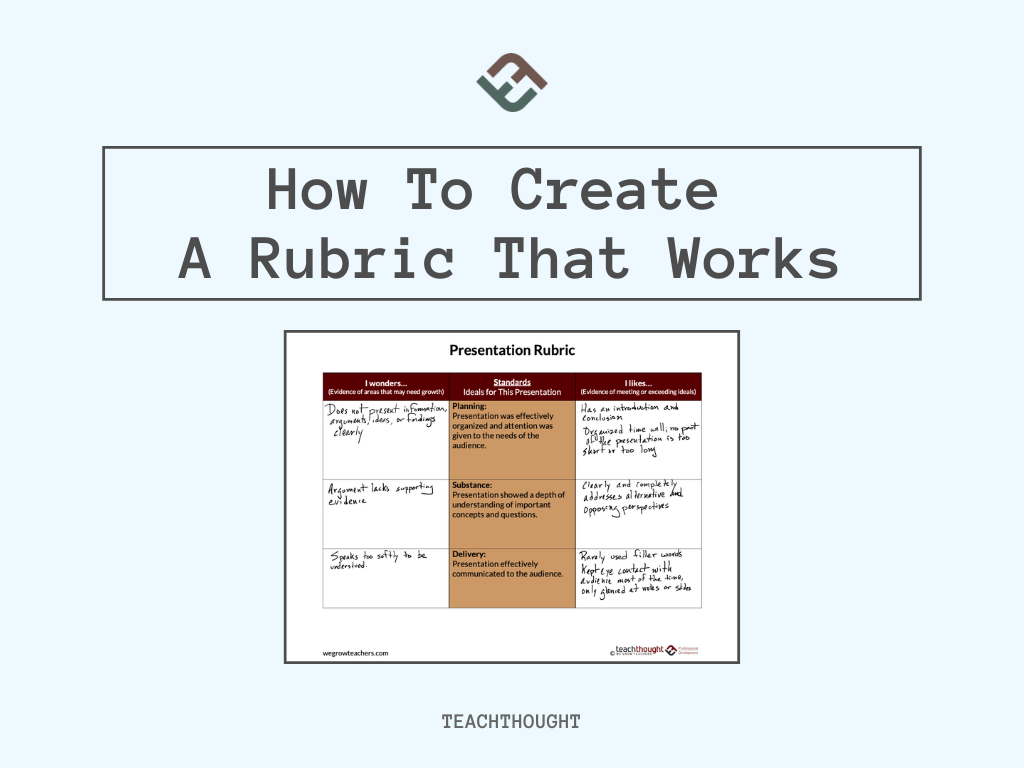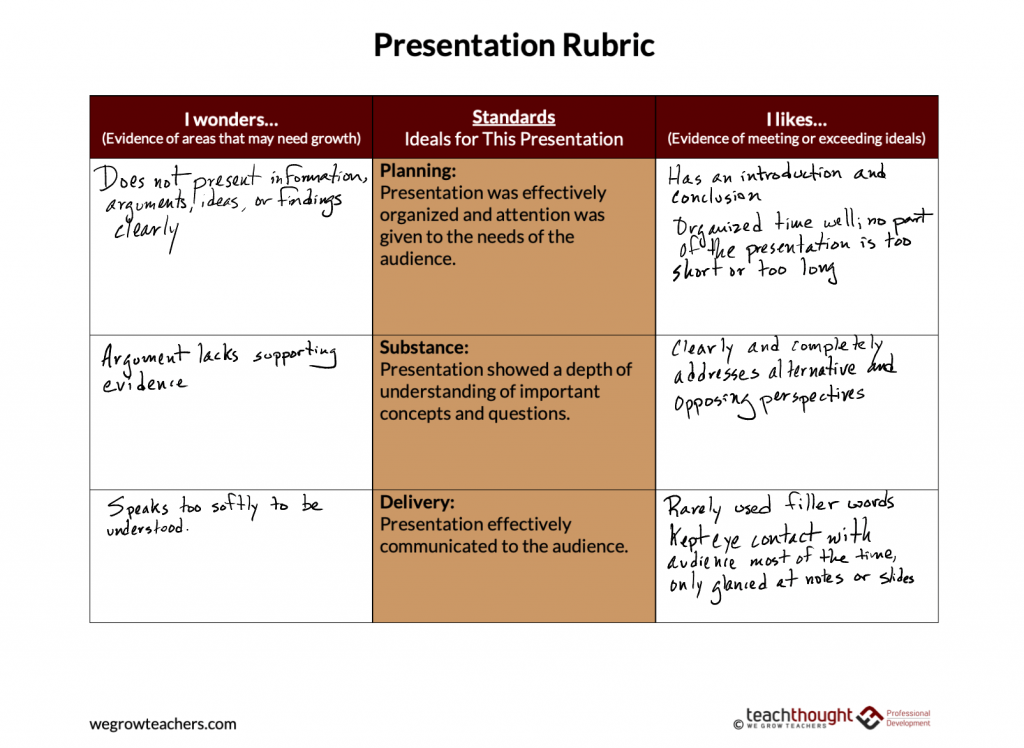
How Single-Point Rubrics Can Improve Student Work
contributed by Drew Perkins
Developing and using rubrics with students has long been a challenge for educators.
Sometimes it’s an afterthought for teachers once they’ve planned their lesson or unit. It’s most definitely an afterthought for most students. We dutifully hand them out at the beginning of the lesson or unit and watch as they stuff them into their backpacks or a random folder. Or worse, we pick them off the floor at the end of class and wonder why students don’t care enough.
Students usually see them next stapled to their grade as they ask why they received whatever grade we assigned, and we say, “Didn’t you look at your rubric?” I’ve been there and it’s not only frustrating but not helpful. So how can we design and use rubrics that deepen student thinking and learning and help them improve their work?
I’m a big fan of the single-point rubric and often use the ‘Breakfast in Bed’ example from Cult of Pedagogy. I like the simplicity for teachers and students over typical rubrics that feel like a bloated and complex matrix. Single-point rubrics help teachers make an important shift with the assessment process.
With traditional rubrics we try to fit what the student has produced into one of the indicators in one of the many boxes corresponding to a number score. With single-point rubrics we shift to providing evidence of meeting, exceeding, or falling short of the quality you’re looking for. They’re also a great way to embed Rich Inquiry, peer critique, and even involve students in identifying what quality should look like.
Single-point rubrics can be used for anything but because we get so many questions about presentation rubrics, I’ll use that for this example. Most rubrics have multiple categories and something like 4 columns ranging from below standard to above standard like this one from PBLWorks. I used similar rubrics for years but much prefer the thinking and process that single-point rubrics help establish.
See also The Problem With Rubrics In Learning
How Single Point Rubrics Work
A single-point rubric designed to assess and provide feedback for presentations might look like the example below. Because I prefer simplicity I’ve created three categories I would like to assess and give feedback on and they’re in the middle column. Most people call these standards but I prefer ‘ideals’ because standards implies something we reach, a static point. Using ‘ideals’ conveys that these are things we’re constantly in pursuit of. This may be semantics but it’s important as a part of a classroom culture that includes Meaningful Assessment in PBL.
It’s also important to use qualitative, not quantitative, language in these target statements. So instead of “Uses 4 or more vocabulary words,” save that for the evidence that they showed a depth of understanding or demonstrated content fluency.
Now we can use the evidence we see in the presentation to support those target statements. For example, things like “does not present information, arguments, ideas, or findings clearly” would be evidence of falling short of the Planning target of “Presentation was effectively organized and attention was given to the needs of the audience”.

Similarly “keeps eye contact with audience most of the time, only glances at notes or slides” would be evidence of meeting or exceeding the Delivery ideal of “effectively communicating to the audience.” I’ve purposely taken the language from the example rubric from PBLWorks to use in the single-point example to make a point but of course your evidence would be what you saw and heard.
If we want students to actually use rubrics we have to provide reasons and opportunities to do so. Consider how you might use this rubric, or your version of it, to have students evaluate a presentation from their peers and/or even a presentation from a Ted Talk or something similar. What evidence did they see that supported meeting that target ideal? This opens the door to critical thinking and construction of meaning and quality by students is important.
Consider the valuable conversation you might have with students about their work discussing what you saw and heard instead of trying to shoehorn their presentation into a preset list of bullet points in a matrix. If you’re wondering how to turn this into a grade or score after that discussion check out How to Turn Rubric Scores into Grades. You’ll want to work out the process to fit your situation but don’t overlook the importance of delaying the score or points.
Single-point rubrics are a great tool to help teachers deepen student thinking and learning.